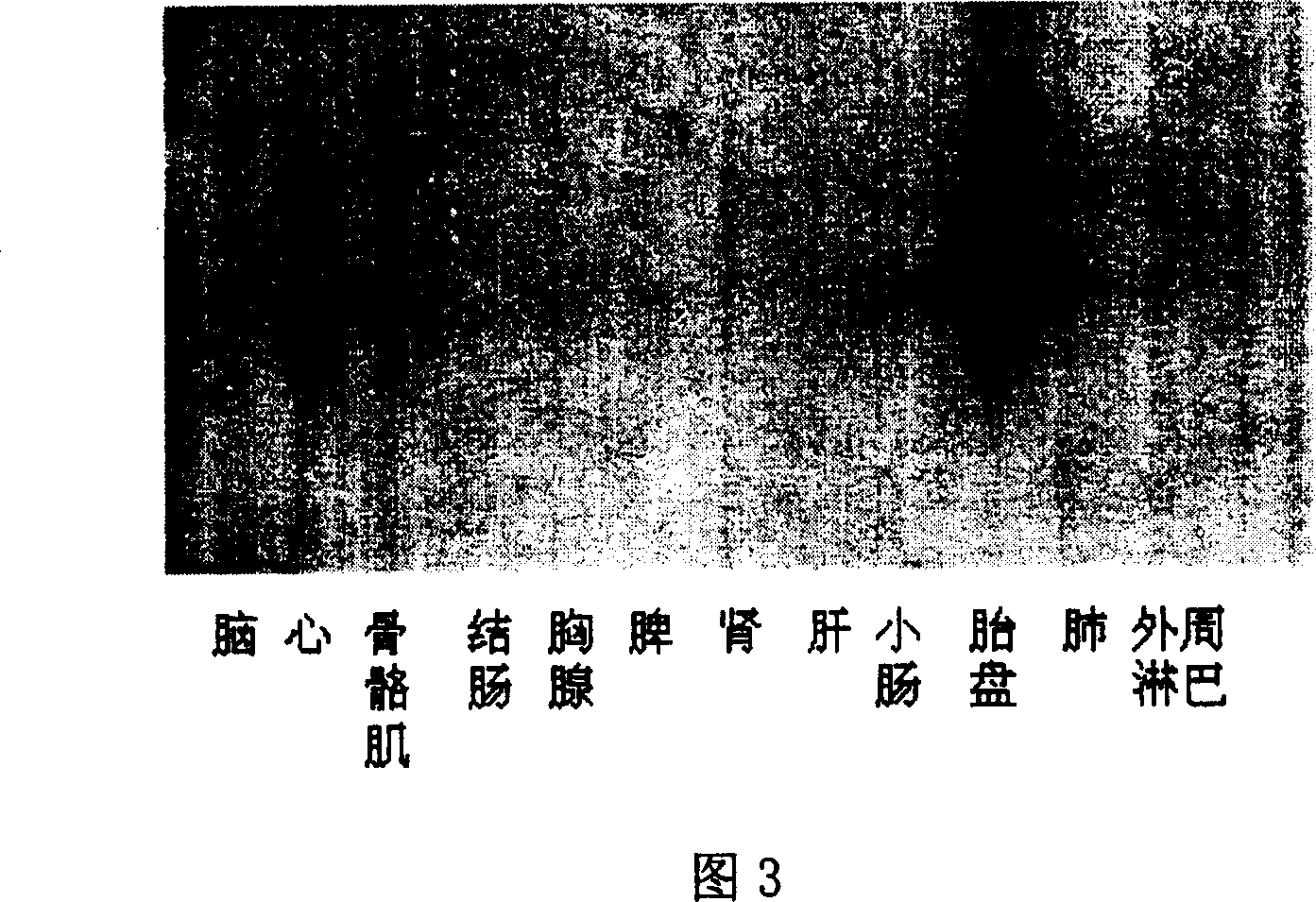Liver cancer relative gene DLK1 and its use
A liver cancer, sequence technology, applied in the fields of molecular biology and genetic engineering, can solve the problems of little knowledge and poor prognosis of liver cancer
- Summary
- Abstract
- Description
- Claims
- Application Information
AI Technical Summary
Problems solved by technology
Method used
Image
Examples
Embodiment 1
[0036] Extraction of liver tissue RNA
[0037] The RNA extraction reagent uses TRIzol reagent (GIBCO / BRL), which is produced based on the one-step extraction method with acidic phenol. The utensils and water used for RNA extraction must be RNase-free to ensure an RNase-free environment in the experiment.
[0038] Dry-bake the pestle, homogenizer and other utensils at 200°C for 4 hours to remove RNase and cool down; add liquid nitrogen to pre-cool, take the tissue out of the liquid nitrogen quickly, and grind it into powder; use a spatula to put the tissue into the pre- Add TRIzol reagent to the homogenizer and homogenize for several minutes; transfer the homogenized liquid into an RNase-free centrifuge tube, add chloroform, and centrifuge at 4°C to separate layers; transfer the upper aqueous phase to an RNase-free In a centrifuge tube, add isopropanol and centrifuge at 4°C to precipitate RNA; wash the precipitate twice with 75% ethanol; dissolve the precipitate with RNase-fre...
Embodiment 2
[0041] cDNA synthesis
[0042] reverse transcription (RT)
[0043] Total RNA 1 μg
[0044] oligo dT (10pmol / l) 1μl
[0045] h 2 O make up to 12 μl
[0046] Denature at 70°C for 3 minutes, then place on ice to cool;
[0047] Then add 5×Buffer 4μl
[0048] DTT 2μl
[0049] dNTP 1μl
[0050] SuperScript II 1μl
[0051] React at 42°C for 1 hour, denature at 70°C for 15 minutes, and cool on ice.
Embodiment 3
[0053] PCR amplification
[0054]Using β-actin as internal control, the components in the reaction mixture are: β-actin(F) primer, β-actin(R) primer, DLK1(F) primer, DLK1(R) primer, 10×Buffer, MgCl 2 , dNTP, Taq DNA polymerase, and cDNA template are 0.2, 0.2, 0.4, 0.4, 1.0, 1.0, 0.2, 0.1 and 5 μL cDNA template, and finally add ddH 2 O to make the reaction volume 10 μL. The reaction conditions of PCR were denaturation at 94°C for 5min; then each cycle was 30s at 94°C, 30s at 53°C, and 30s at 72°C for a total of 30 cycles; and finally extended at 72°C for 7min.
PUM
 Login to View More
Login to View More Abstract
Description
Claims
Application Information
 Login to View More
Login to View More - R&D
- Intellectual Property
- Life Sciences
- Materials
- Tech Scout
- Unparalleled Data Quality
- Higher Quality Content
- 60% Fewer Hallucinations
Browse by: Latest US Patents, China's latest patents, Technical Efficacy Thesaurus, Application Domain, Technology Topic, Popular Technical Reports.
© 2025 PatSnap. All rights reserved.Legal|Privacy policy|Modern Slavery Act Transparency Statement|Sitemap|About US| Contact US: help@patsnap.com



